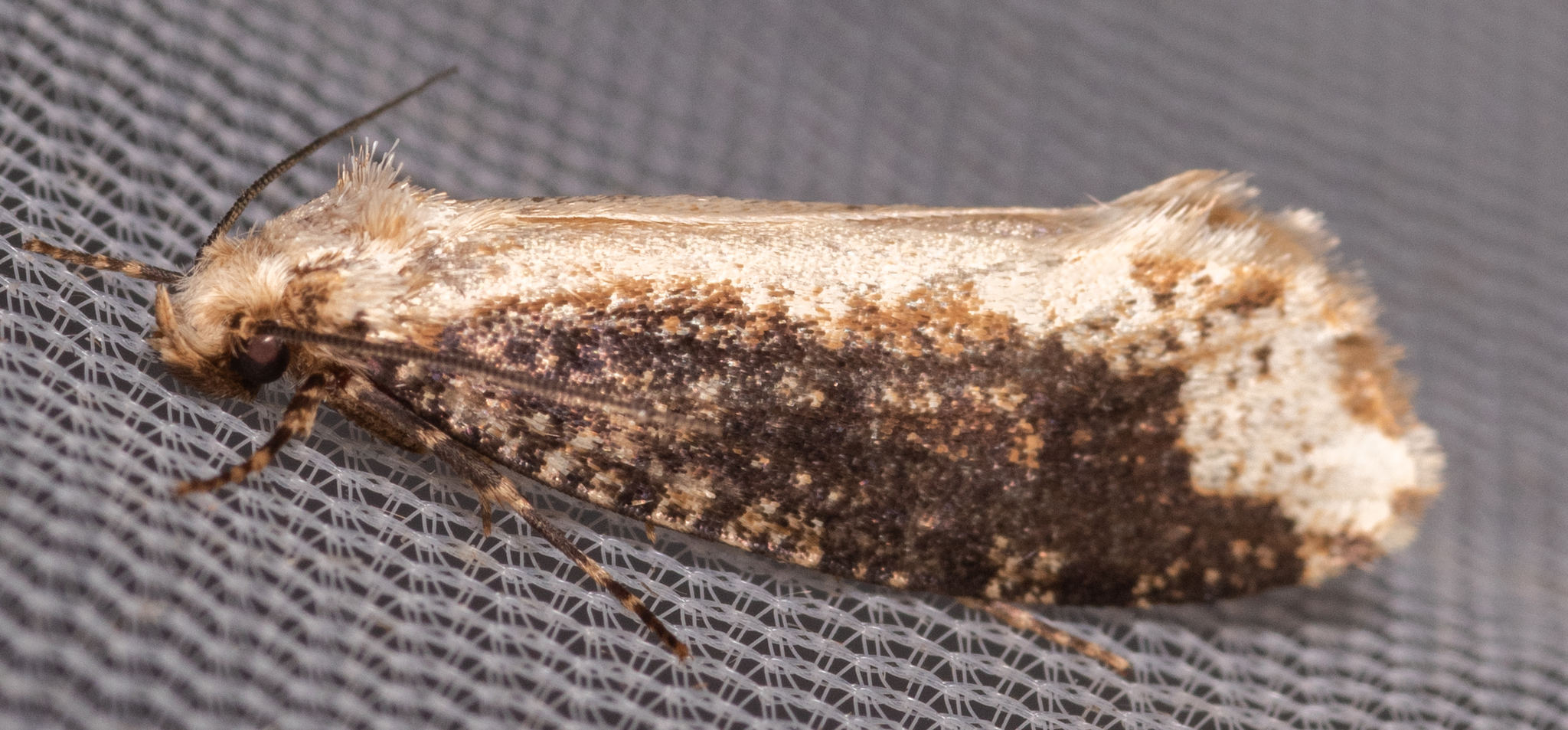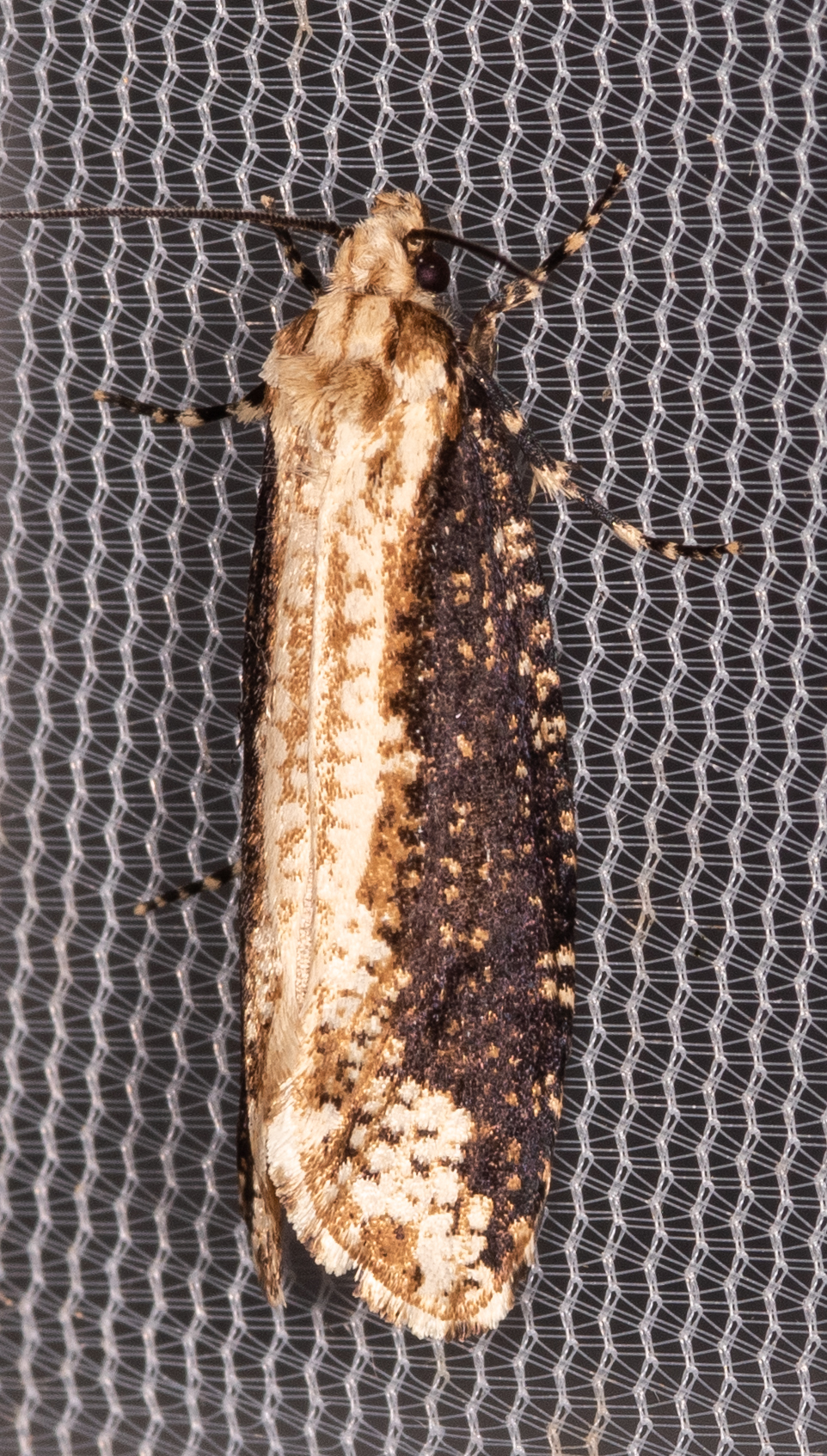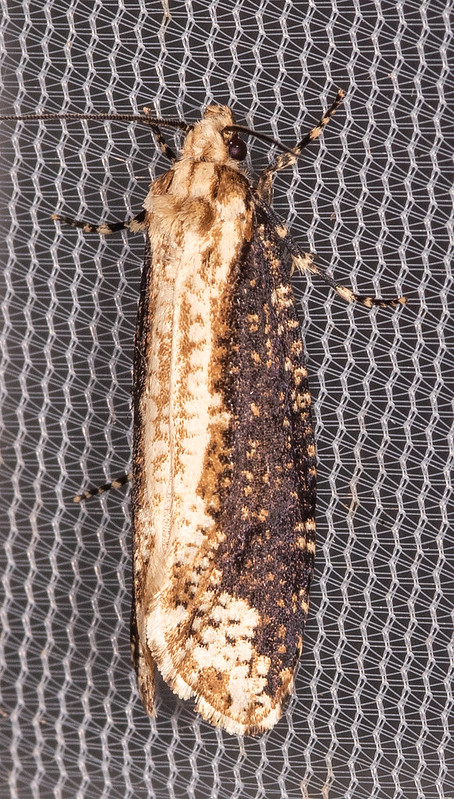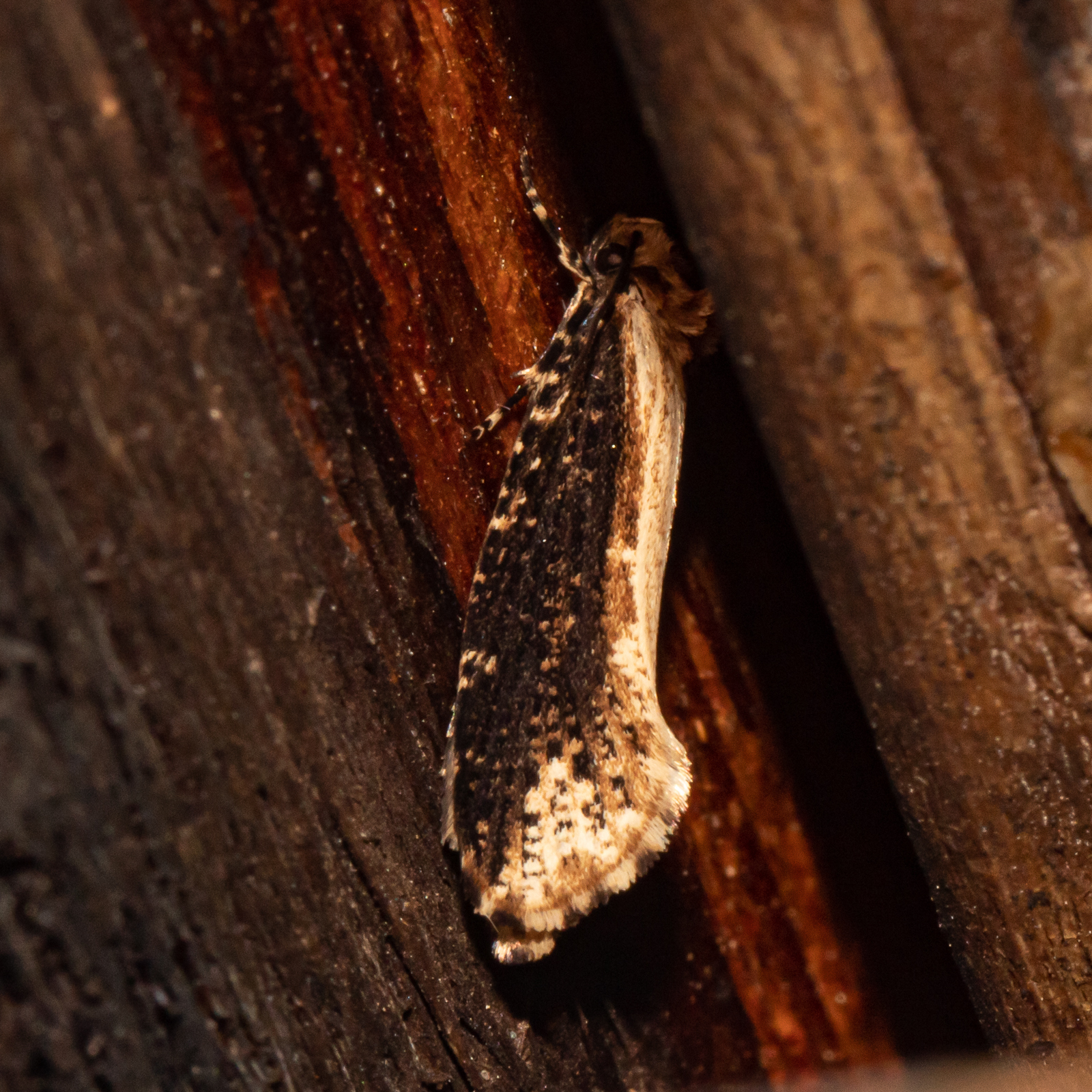Map Snapshot



3 Records
Description
Though highly variable in size, amurensis specimens are very large with a wingspan of up to 40 mm. The forewing cream marking are extended along the entire length of the dorsal margin and over the terminal area; the terminal margin has a few rusty-brown spots. (BugGuide)
Where To Find
Palearctic in origin: Amur and Primorskii Regions in far-eastern Russia, Japan, possibly adjacent parts of China (Robinson 1986; Baryshnikova 2008). In North America, it occurs in the eastern United States. Landry et al. (2013) include records from Texas, Mississipi, Georgia, North Carolina, South Carolina, Maryland, New Jersey, and West Virginia (1). Additional records from Tennessee and Ohio on BugGuide. MPG includes records of Daviscardia coloradella from Indiana and Maine, but these almost certainly represent misidentifications of Scardia amurensis. (BugGuide)
Seasonality Snapshot
Source: Wikipedia
| Scardia amurensis | |
|---|---|
| Scientific classification | |
| Domain: | Eukaryota |
| Kingdom: | Animalia |
| Phylum: | Arthropoda |
| Class: | Insecta |
| Order: | Lepidoptera |
| Family: | Tineidae |
| Genus: | Scardia |
| Species: | S. amurensis
|
| Binomial name | |
| Scardia amurensis Zagulajev, 1965
| |
Scardia amurensis is a moth of the family Tineidae. It is found in the Russian Far East (Amur, Primorskii), Japan and possibly adjacent parts of China. In North America, it has been recorded from Georgia, Maryland, Mississippi, New Jersey, North Carolina, South Carolina, Texas and West Virginia.
The wingspan is about 40 mm.
The larvae have been recorded feeding on Globifomes graveolens, Fomes species and possibly other bracket fungi.[1]
References
[edit]- ^ "Shared but overlooked: 30 species of Holarctic Microlepidoptera revealed by DNA barcodes and morphology". Archived from the original on 2020-01-30. Retrieved 2015-08-26.



